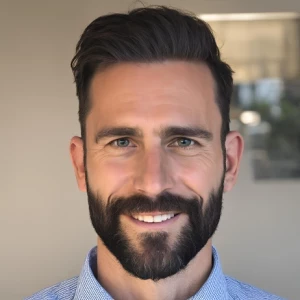How would you answer this question in your Personal Fit interview?
How do you decide between two risky investments?

weight out the pros and cons of each and ask for advice from someone above

This is one of those personal fit questions that’s meant to probe how you think—not just what decision you’d make. They want to hear how you weigh trade-offs, how you deal with uncertainty, and whether you have a clear, structured thought process.
Here’s how I’d approach it in an interview setting:
“If I’m deciding between two risky investments, I start by asking: risky in what way? Is the risk about volatility, downside potential, uncertainty around key assumptions, or maybe execution risk? Getting clear on the nature of the risk helps me frame the decision more clearly.
Once I understand that, I’d look at three things: expected return, downside protection, and how much conviction I can build in the key assumptions. So for example, one investment might have higher return potential but rely heavily on aggressive growth assumptions. The other might be more conservative but backed by stronger fundamentals or a clearer path to value creation.
In that case, I’d ask: which assumptions can I diligence? Where do I have an edge in understanding the risk? And which one would I still be comfortable holding if things don’t go perfectly? I don’t mind risk if I understand it well and can defend the bet logically.
To be honest, I’d also consider the context—what’s the broader portfolio or strategic objective? If I’m making this decision as part of a team or firm, alignment with the overall strategy matters too.”
You can ground this with a real example if you have one—like choosing between two internships, two case paths in a competition, or two business ideas with trade-offs. That gives you more credibility and makes your answer stick.

I’d compare the two options based on risk, return, time horizon, and how they fit my goals. I’d also try to think ahead: what might happen if I choose one over the other? Anticipating potential outcomes helps reduce uncertainty. If I’m unsure, I’d seek input or stress-test my assumptions. It’s about making a thoughtful, not perfect, decision.
Rita

When asked “How do you decide between two risky investments?” in a Personal Fit interview, it’s important to show a thoughtful and structured approach to decision-making under uncertainty.
I would explain that I start by gathering as much relevant information as possible about both options, including potential returns, risks, and market conditions. Then, I weigh the risks against the expected rewards, considering not just the numbers but also factors like timing, alignment with long-term goals, and the broader context. I’d also mention the importance of scenario analysis and stress testing to understand how each investment might perform under different outcomes.
Finally, I would emphasize the role of intuition and judgment built on experience, while being ready to adapt or cut losses if things don’t go as planned. Sharing a real example where I balanced risk and made a tough choice would help demonstrate this mindset clearly.

Hey There!
When you're asked how you would decide between two risky investments in a Personal Fit interview, the focus is on how you approach uncertainty and make decisions under pressure. A strong answer begins with outlining your thought process. You would start by understanding the nature of the risk involved—whether it is market-driven, operational, or related to external factors like regulation. From there, you would assess the potential return, looking at both upside scenarios and worst-case outcomes. It is important to compare not just expected returns, but also how much risk you are taking to achieve them.
You can also show maturity by mentioning that you would consider qualitative aspects, like how confident you are in the assumptions behind each opportunity, how credible the leadership is, and how adaptable the underlying business model seems. Rather than pretending to have a perfect answer, position yourself as someone who would approach such decisions with structure, curiosity, and a clear sense of what matters most in the context. This reflects the type of judgment firms value—not just technical skill, but thoughtful decision-making under uncertainty.

I first evalutae each investments and the risk that they have. Secondly i look at the geoploitcal and political landscape. How may changes in those landsacpes multiply or diversify the investment risk. In close correlation i look at the economy and current trends. I look at the state of such trends and how these trend may influence my investment. Additionally i make an in depth market analysis while also looking at the institutions behind my invetsments. Upon taking a closer look at what my risk accpetance is and how i want to position myself, i make the decision.
Ich diskontiere zurück auf den present value und nehme die, die sich mehr auszahlt.
Außerdem würde ich eine Szenarienanalyse verwenden.




